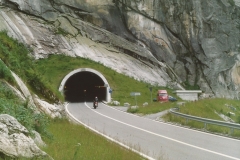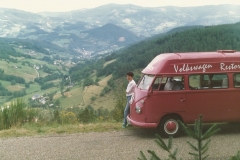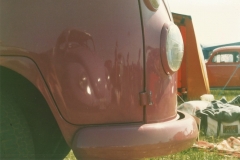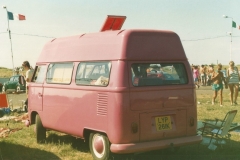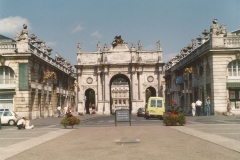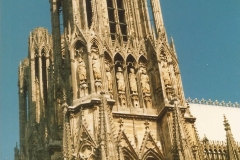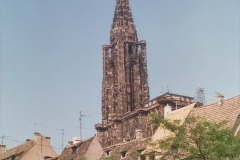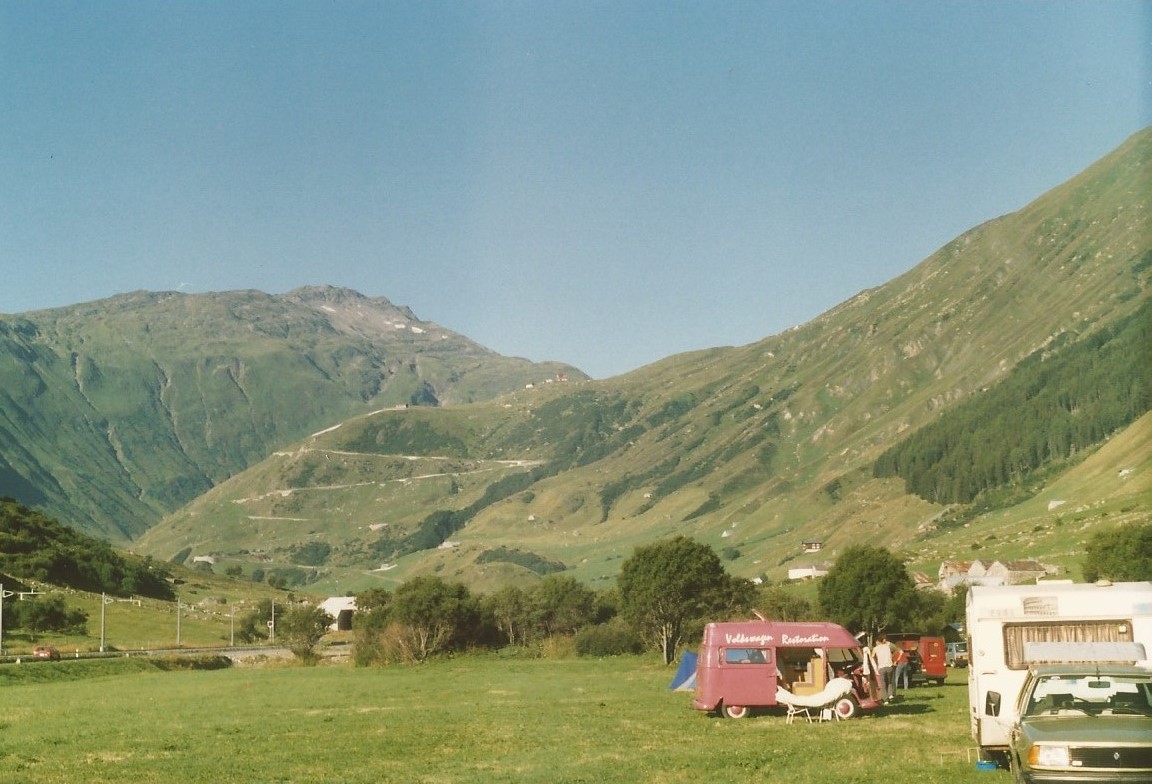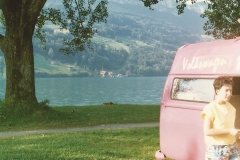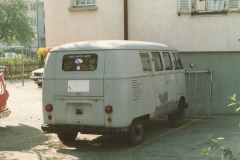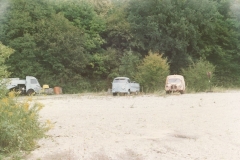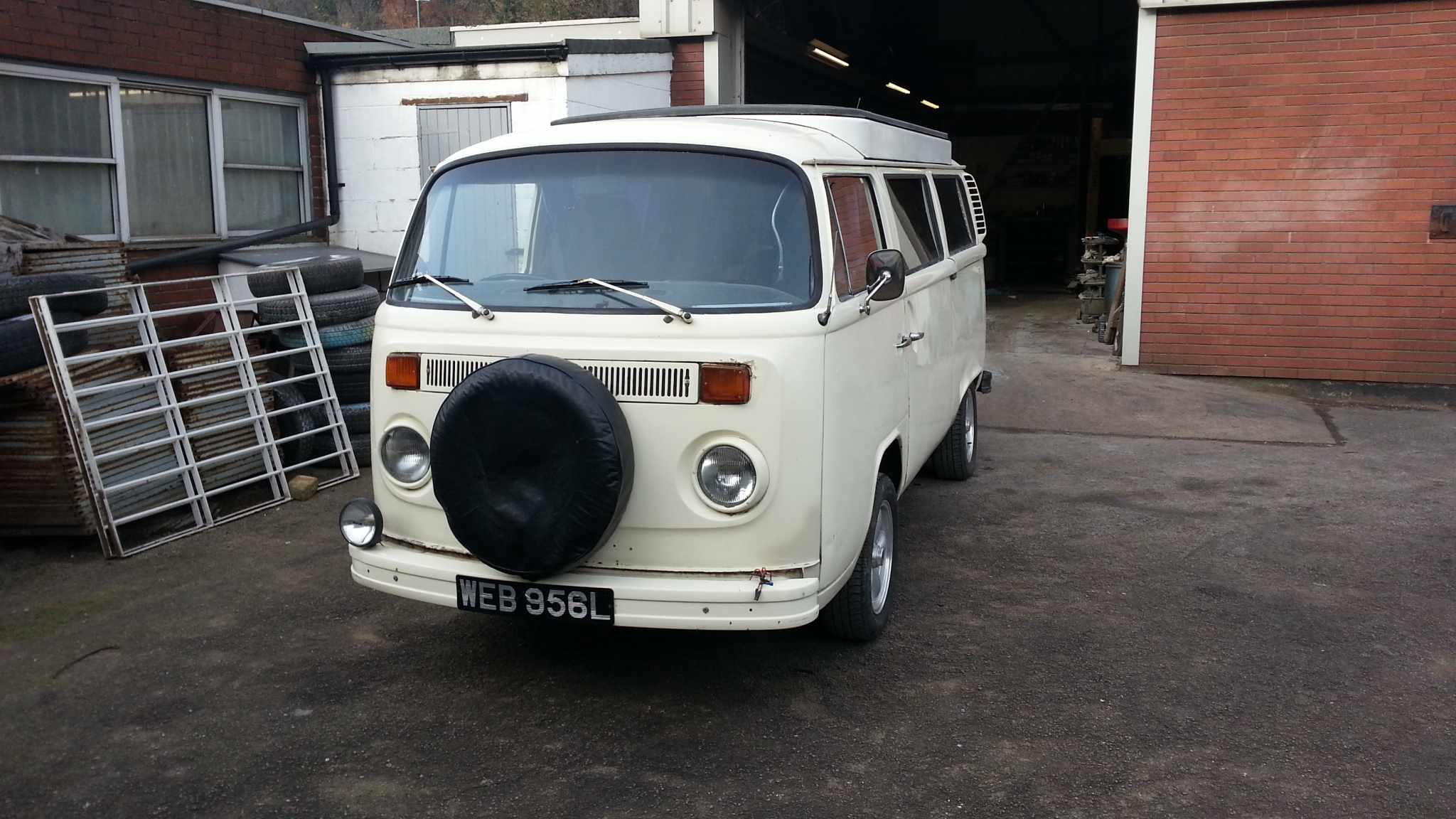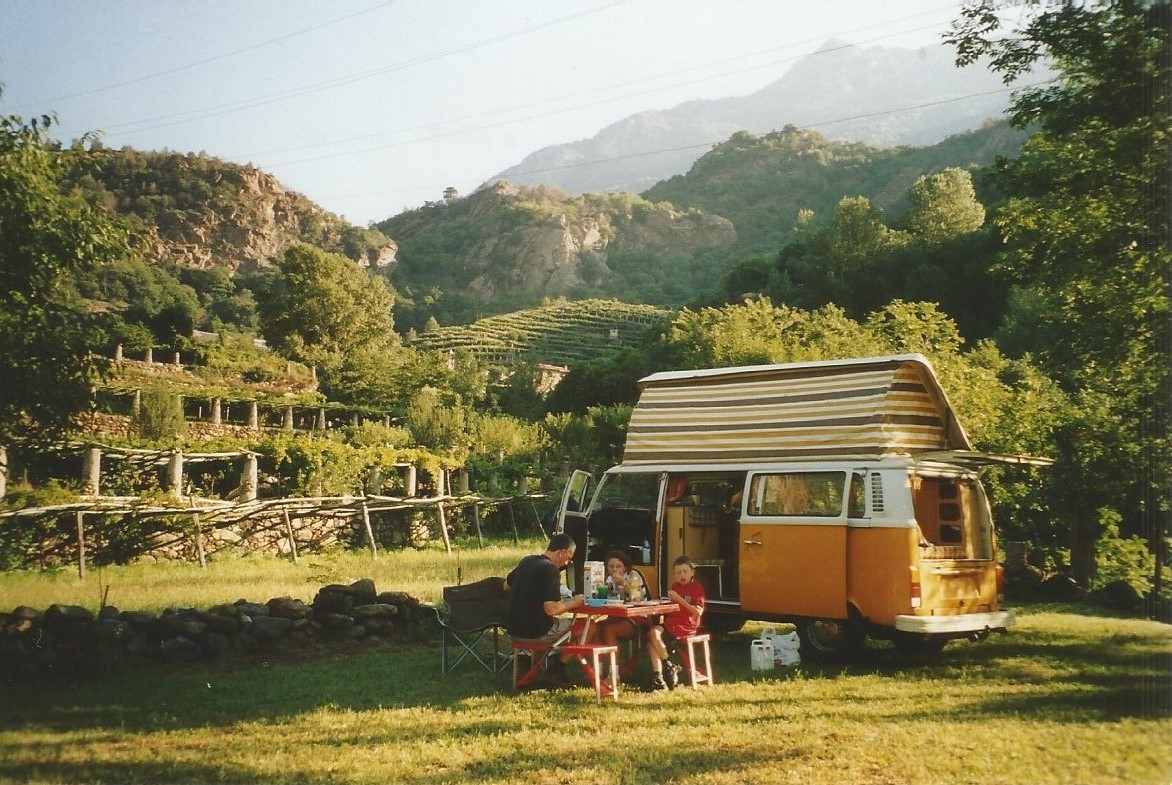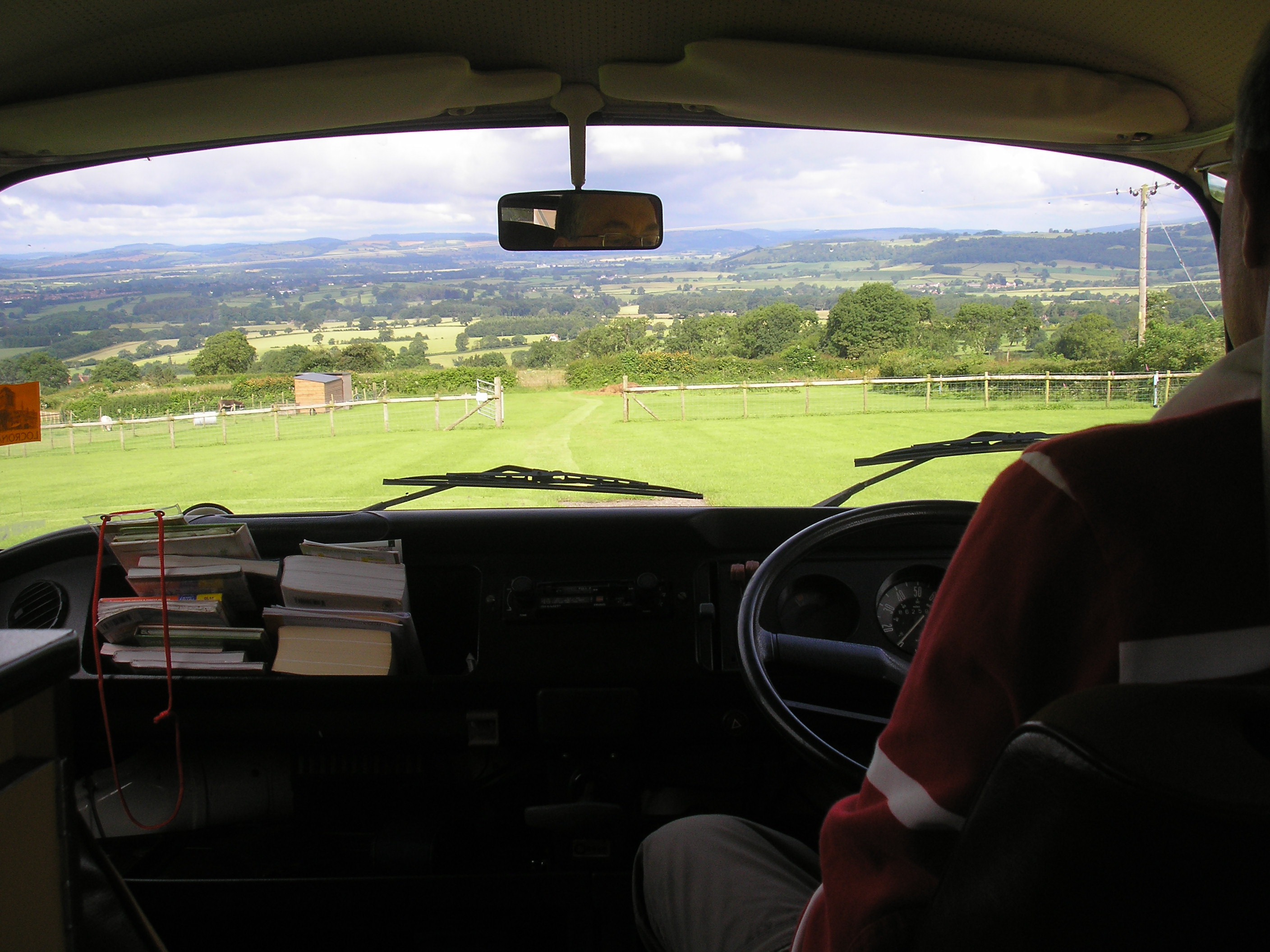Looking back to our first campervan trip abroad in 1989, and comparing it to the similar route we took in 2018, it is clear that a lot has changed.
In 1989, we were equipped with just a European road atlas and the assurance that campsites would be easy to find in France. By 2018, we had the advantage of mobile internet access, together with satnav, in order to be sure where we could find sites and navigate straight to them.
In 1989, air-cooled VWs were a common sight on Europe’s roads. By 2018, we saw only 4 air-cooled VWs on our trip of over 2000 miles.
Our pink sliding door split was looking smart and shiny, having only recently been put back on the road and sign-written with the Bughaus logos.
Our first trip followed the pattern of the trips that would follow: a couple of weeks off work, a ferry crossing booked and no more plans than that, just planning a day at a time and stopping off whereever we fancied.
Our holiday started with a trip to Canterbury en route to our crossing from Ramsgate which was then a working port, in the days long before Seaborne freight had been heard of.
We journeyed south spending time at the cities of Reims, Nancy and Strasbourg.
We then travelled on into Switzerland, staying near Lucerne and travelling on to the Rhone Glacier and the Furka Pass
We spent two days camping alongside the lake at Brunnen before making our return trip through the Black Forest and back up to the channel.
We were keen to spot any interesting VWs en route.
In Switzerland, there were quite a lot of splits which had been Swiss army vehicles, obvious from their khaki paint job.
We photographed these, in the vain hope that we may return and even be able to purchase them
We relied on whoever was navigating to spot any signs to campsites to find a place to pitch each night and as usual found some spectacular sites, and some decidedly dodgy ones.
Our pink split ran beautifully for the duration of the trip, but unfortunately developed an intermittent starting motor problem in Switzerland. This then challenged us to make sure that any stopping places for the rest of the trip could facilitate an easy push start. We managed to upset a few of the very environmentally conscious Swiss people by leaving the engine running when they thought we should switch it off. It also proved a bit of a challenge as we pulled off the ferry, but we managed to do this without causing too much of a delay to the rest of the vehicles.
Although the details of this trip escape the memory 30 years on, the highlights remain vivid, especially the intricate beauty of the cathedrals in Reims and Strasbourg, the elegant Place de Stanislas in Nancy, the lush pastures of the Swiss meadows, the spectacular Alps made accessible by the fantastically engineered passes and tunnels. And as can be seen by the other pages of the blog, it whet our appetites for further trips, near and far in a succession of campers.

